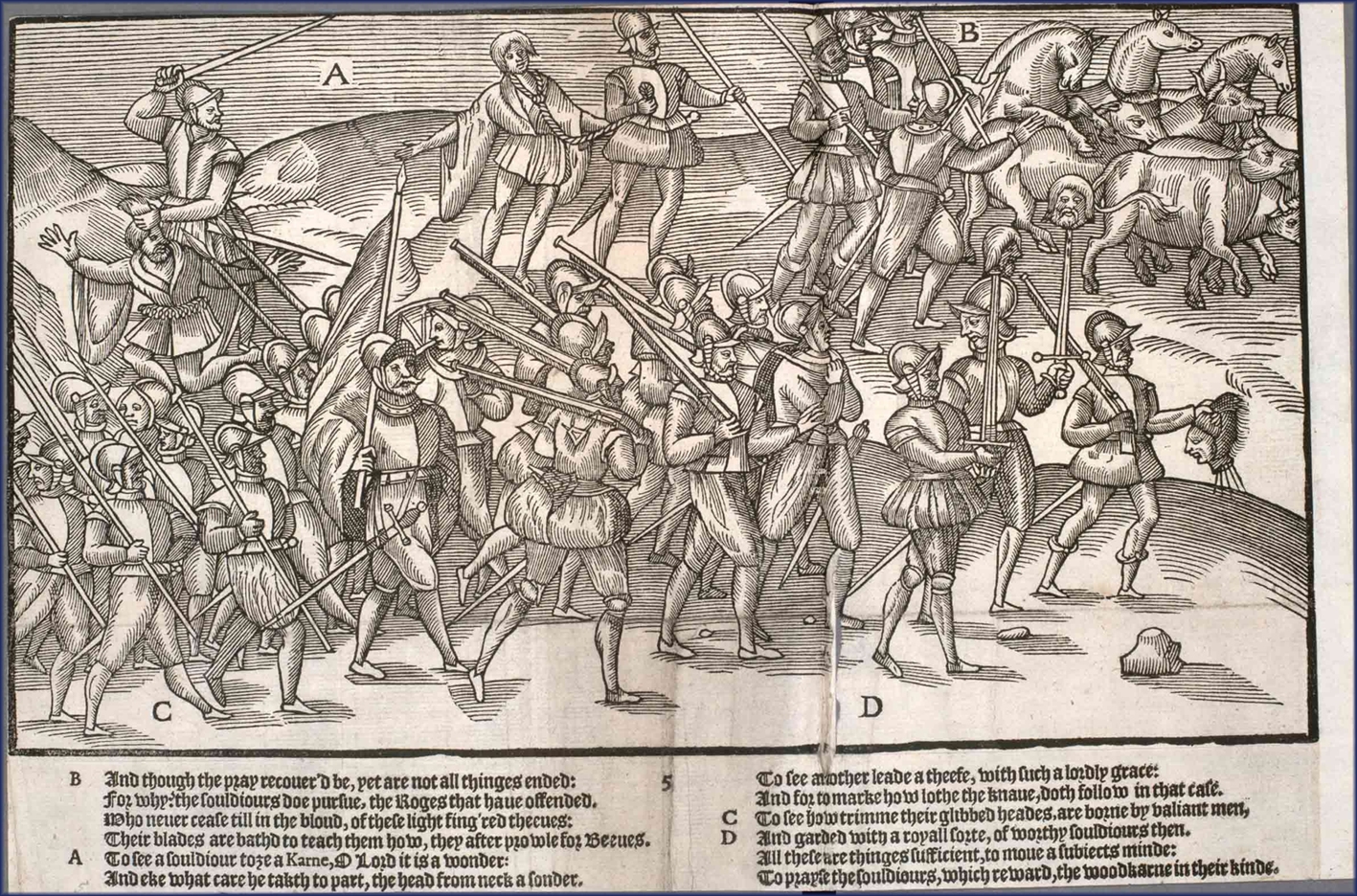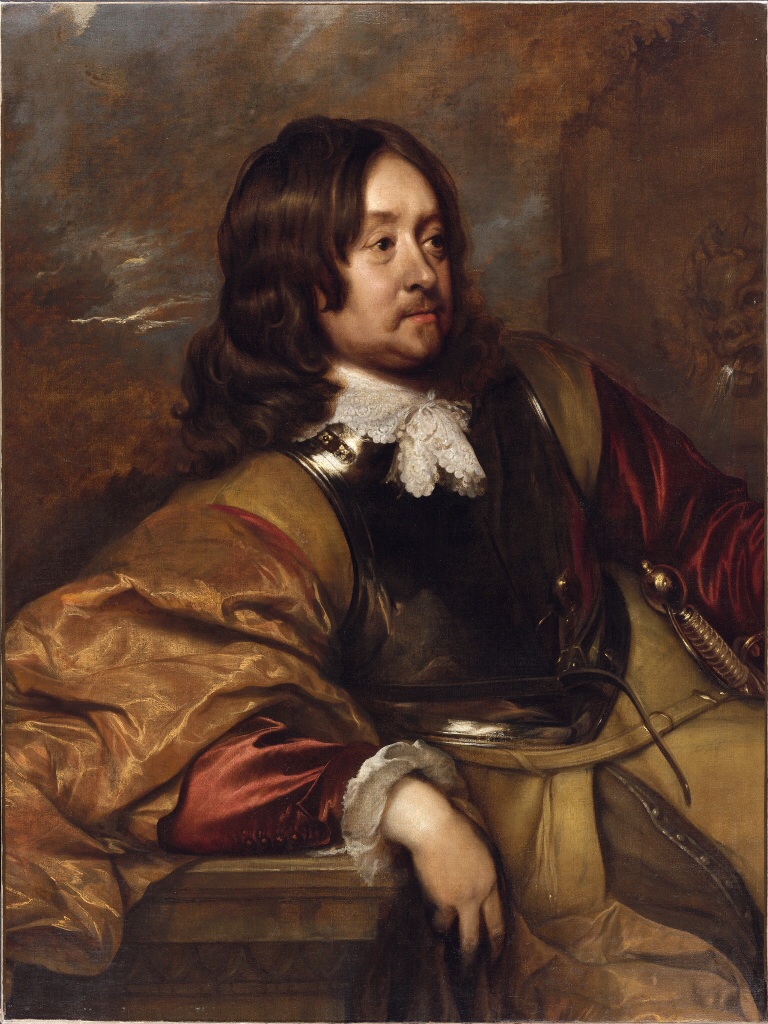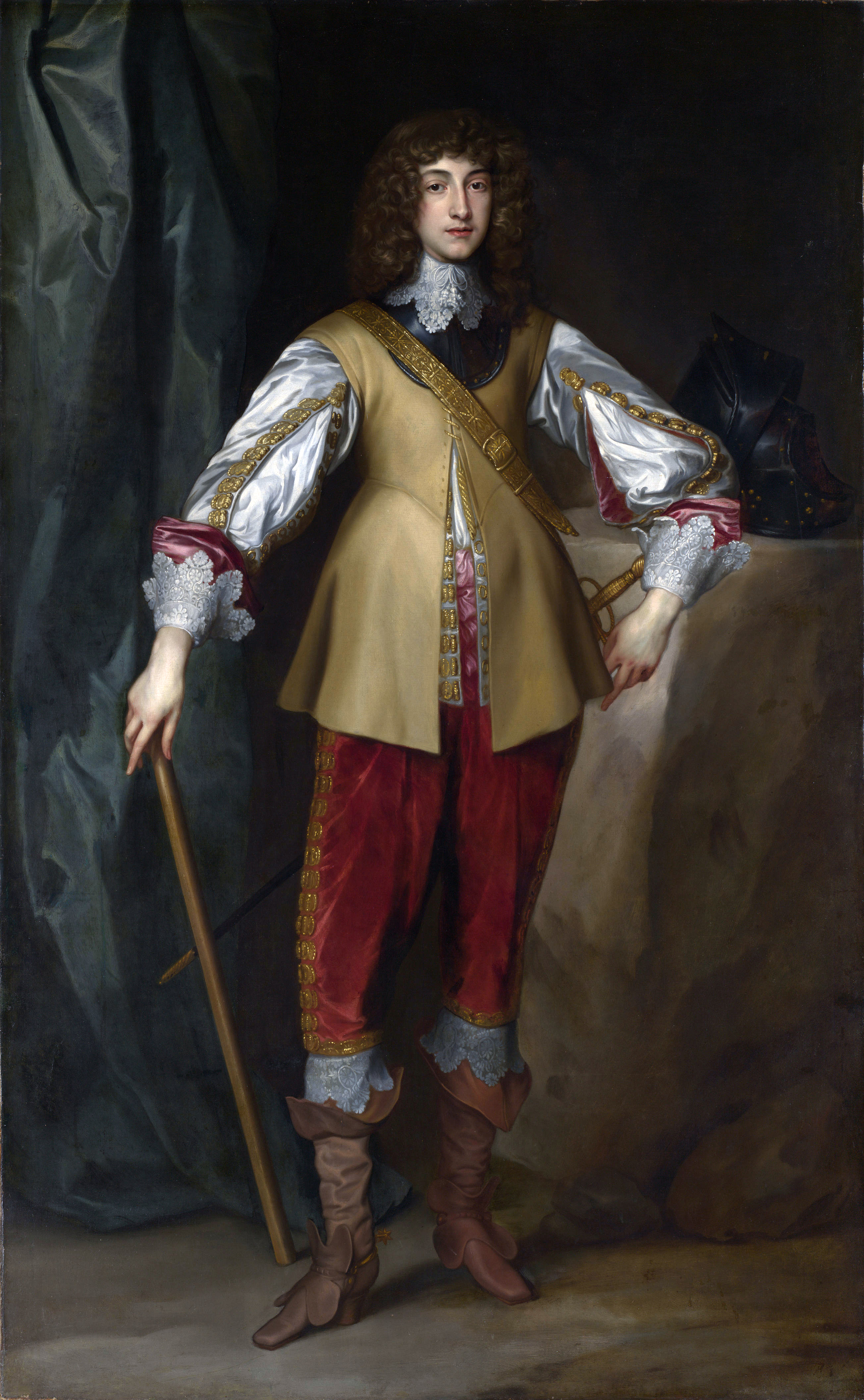|
English Civil War
The English Civil War or Great Rebellion was a series of civil wars and political machinations between Cavaliers, Royalists and Roundhead, Parliamentarians in the Kingdom of England from 1642 to 1651. Part of the wider 1639 to 1653 Wars of the Three Kingdoms, the struggle consisted of the First English Civil War and the Second English Civil War. The Anglo-Scottish war (1650–1652), Anglo-Scottish War of 1650 to 1652 is sometimes referred to as the ''Third English Civil War.'' While the conflicts in the three kingdoms of England, Kingdom of Scotland, Scotland and Kingdom of Ireland, Ireland had similarities, each had their own specific issues and objectives. The First English Civil War was fought primarily over the correct balance of power between Parliament of England, Parliament and Charles I of England, Charles I. It ended in June 1646 with Royalist defeat and the king in custody. However, victory exposed Parliamentarian divisions over the nature of the political settlemen ... [...More Info...] [...Related Items...] OR: [Wikipedia] [Google] [Baidu] |
Wars Of The Three Kingdoms
The Wars of the Three Kingdoms were a series of conflicts fought between 1639 and 1653 in the kingdoms of Kingdom of England, England, Kingdom of Scotland, Scotland and Kingdom of Ireland, Ireland, then separate entities in a personal union under Charles I of England, Charles I. They include the 1639 to 1640 Bishops' Wars, the First English Civil War, First and Second English Civil Wars, the Irish Confederate Wars, the Cromwellian conquest of Ireland and the Anglo-Scottish war (1650–1652), Anglo-Scottish War of 1650–1652. They resulted in the execution of Charles I, the abolition of monarchy, and founding of the Commonwealth of England, a unitary state which controlled the British Isles until the Stuart Restoration in 1660. Political and religious conflict between Charles I and his opponents dated to the early years of his reign. While the vast majority supported the institution of monarchy, they disagreed on who held ultimate authority. Cavalier, Royalists generally argued ... [...More Info...] [...Related Items...] OR: [Wikipedia] [Google] [Baidu] |
Maurice Of The Palatinate
Maurice, Prince Palatine of the Rhine KG (16 January 1621 – 1 September 1652) was the fourth son of Frederick V, Elector Palatine and Princess Elizabeth, daughter of King James VI and I and Anne of Denmark. Life Maurice was present with his elder brother, Rupert, at the siege of Breda in 1637. He then accompanied Rupert, to support their uncle Charles I in the English Civil War in 1642. Maurice served under Rupert with the cavalry at the Battle of Powick Bridge, where he was wounded, and the Battle of Edgehill. He accompanied his uncle Charles in the occupation of Oxford on 29 October 1642. He commanded the army in Gloucestershire which engaged Sir William Waller in several battles in 1643, including the victory of Ripple Field (13 April), culminating in the Royalist victory at the Battle of Roundway Down (13 July). By 1644, Maurice was appointed lieutenant-general south of the Thames, assuming command of the army in Cornwall and spending the rest of the year campaig ... [...More Info...] [...Related Items...] OR: [Wikipedia] [Google] [Baidu] |
Kingdom Of Ireland
The Kingdom of Ireland (; , ) was a dependent territory of Kingdom of England, England and then of Kingdom of Great Britain, Great Britain from 1542 to the end of 1800. It was ruled by the monarchs of England and then List of British monarchs, of Great Britain, and was Dublin Castle administration, administered from Dublin Castle by a viceroy appointed by the English king: the lord deputy of Ireland. Aside from brief periods, the state was dominated by the Protestant English (or Anglo-Irish people, Anglo-Irish) minority, known as the Protestant Ascendancy. The Protestant Church of Ireland was the state church. The Parliament of Ireland was composed of Anglo-Irish nobles. From 1661, the administration controlled an Irish Army (1661–1801), Irish army. Although ''de jure'' styled as a kingdom, for most of its history it was ''de facto'' an English Dependent territory, dependency (specifically a viceroyalty). This status was enshrined in the Declaratory Act 1719, also known as th ... [...More Info...] [...Related Items...] OR: [Wikipedia] [Google] [Baidu] |
Kingdom Of Scotland
The Kingdom of Scotland was a sovereign state in northwest Europe, traditionally said to have been founded in 843. Its territories expanded and shrank, but it came to occupy the northern third of the island of Great Britain, sharing a Anglo-Scottish border, land border to the south with the Kingdom of England. During the Middle Ages, Scotland engaged in intermittent conflict with England, most prominently the Wars of Scottish Independence, which saw the Scots assert their independence from the English. Following the annexation of the Hebrides and the Northern Isles from Norway in 1266 and 1472 respectively, and the capture of Berwick upon Tweed, Berwick by England in 1482, the territory of the Kingdom of Scotland corresponded to that of modern-day Scotland, bounded by the North Sea to the east, the Atlantic Ocean to the north and west, and the North Channel (British Isles), North Channel and Irish Sea to the southwest. In 1603, James VI of Scotland became King of England, joini ... [...More Info...] [...Related Items...] OR: [Wikipedia] [Google] [Baidu] |
Anglo-Scottish War (1650–1652)
The Anglo-Scottish war (1650–1652), also known as the Third Civil War, was the final conflict in the Wars of the Three Kingdoms, a series of armed conflicts and political machinations between shifting alliances of religious and political factions in England, Scotland and Ireland. The 1650 English invasion of Scotland was a pre-emptive military incursion by the English Commonwealth's New Model Army, intended to allay the risk of Charles II invading England with a Scottish army. The First and Second English Civil Wars, in which English Royalists, loyal to Charles I, fought Parliamentarians for control of the country, took place between 1642 and 1648. When the Royalists were defeated for the second time the English government, exasperated by the duplicity of Charles I during negotiations, set up a High Court of Justice which found the King guilty of treason and executed him on 30 January 1649. At the time, England and Scotland were separate independent kingdoms, joined ... [...More Info...] [...Related Items...] OR: [Wikipedia] [Google] [Baidu] |
Second English Civil War
The Second English Civil War took place between February and August 1648 in Kingdom of England, England and Wales. It forms part of the series of conflicts known collectively as the 1639–1653 Wars of the Three Kingdoms, which include the 1641–1653 Irish Confederate Wars, the 1639–1640 Bishops' Wars, and the 1649–1653 Cromwellian conquest of Ireland. Following his defeat in the First English Civil War, in May 1646 Charles I of England, Charles I surrendered to the Scots Covenanters, rather than Parliament of England, Parliament. By doing so, he hoped to exploit divisions between English and Scots Presbyterian polity, Presbyterians, and English Independent (religion), Independents. At this stage, all parties expected Charles to continue as king, which combined with their internal divisions, allowed him to refuse significant concessions. When the Presbyterian majority in Parliament failed to disband the New Model Army in late 1647, many joined with the Scottish Engagers in ... [...More Info...] [...Related Items...] OR: [Wikipedia] [Google] [Baidu] |
First English Civil War
The First English Civil War took place in England and Wales from 1642 to 1646, and forms part of the 1639 to 1653 Wars of the Three Kingdoms. An estimated 15% to 20% of adult males in England and Wales served in the military at some point between 1639 and 1653, while around 4% of the total population died from war-related causes. These figures illustrate the widespread impact of the conflict on society, and the bitterness it engendered as a result. Conflict over the role of Parliament and religious practice dated from the accession of James VI and I in 1603. These tensions culminated in the imposition of Personal Rule in 1629 by his son, Charles I, who recalled Parliament in April and November 1640. He hoped by doing so to obtain funding that would enable him to reverse his defeat by Scots Covenanters in the Bishops' Wars, but in return Parliament demanded a greater share in government than he was willing to concede. In its early stages, the vast majority on both sides s ... [...More Info...] [...Related Items...] OR: [Wikipedia] [Google] [Baidu] |
England
England is a Countries of the United Kingdom, country that is part of the United Kingdom. It is located on the island of Great Britain, of which it covers about 62%, and List of islands of England, more than 100 smaller adjacent islands. It shares Anglo-Scottish border, a land border with Scotland to the north and England–Wales border, another land border with Wales to the west, and is otherwise surrounded by the North Sea to the east, the English Channel to the south, the Celtic Sea to the south-west, and the Irish Sea to the west. Continental Europe lies to the south-east, and Ireland to the west. At the 2021 United Kingdom census, 2021 census, the population was 56,490,048. London is both List of urban areas in the United Kingdom, the largest city and the Capital city, capital. The area now called England was first inhabited by modern humans during the Upper Paleolithic. It takes its name from the Angles (tribe), Angles, a Germanic peoples, Germanic tribe who settled du ... [...More Info...] [...Related Items...] OR: [Wikipedia] [Google] [Baidu] |
Wales
Wales ( ) is a Countries of the United Kingdom, country that is part of the United Kingdom. It is bordered by the Irish Sea to the north and west, England to the England–Wales border, east, the Bristol Channel to the south, and the Celtic Sea to the south-west. , it had a population of 3.2 million. It has a total area of and over of Coastline of Wales, coastline. It is largely mountainous with its higher peaks in the north and central areas, including Snowdon (), its highest summit. The country lies within the Temperate climate, north temperate zone and has a changeable, Oceanic climate, maritime climate. Its capital and largest city is Cardiff. A distinct Culture of Wales, Welsh culture emerged among the Celtic Britons after the End of Roman rule in Britain, Roman withdrawal from Britain in the 5th century, and Wales was briefly united under Gruffudd ap Llywelyn in 1055. After over 200 years of war, the Conquest of Wales by Edward I, conquest of Wales by King Edward I o ... [...More Info...] [...Related Items...] OR: [Wikipedia] [Google] [Baidu] |
Kingdom Of England
The Kingdom of England was a sovereign state on the island of Great Britain from the late 9th century, when it was unified from various Heptarchy, Anglo-Saxon kingdoms, until 1 May 1707, when it united with Kingdom of Scotland, Scotland to form the Kingdom of Great Britain, which would later become the United Kingdom. The Kingdom of England was among the most powerful states in Europe during the Middle Ages, medieval and Early modern period, early modern periods. Beginning in the year 886 Alfred the Great reoccupied London from the Danish Vikings and after this event he declared himself King of the Anglo-Saxons, until his death in 899. During the course of the early tenth century, the various Anglo-Saxons, Anglo-Saxon kingdoms were united by Alfred's descendants Edward the Elder (reigned 899–924) and Æthelstan (reigned 924–939) to form the Kingdom of the English. In 927, Æthelstan conquered the last remaining Viking kingdom, Scandinavian York, York, making him the first ... [...More Info...] [...Related Items...] OR: [Wikipedia] [Google] [Baidu] |
Cavaliers
The term ''Cavalier'' () was first used by Roundheads as a term of abuse for the wealthier royalist supporters of Charles I of England and his son Charles II of England, Charles II during the English Civil War, the Interregnum (England), Interregnum, and the Restoration (England), Restoration (1642 – ). It was later adopted by the Royalists themselves. Although it referred originally to political and social attitudes and behaviour, of which clothing was a very small part, it has subsequently become strongly identified with the fashionable clothing of the court at the time. Prince Rupert of the Rhine, Prince Rupert, commander of much of Charles I's cavalry, is often considered to be an archetypal Cavalier. Etymology ''Cavalier'' derives from the same Latin root as the Italian word , the French word , and the Spanish word , the Vulgar Latin word ''wikt:caballarius, caballarius'', meaning 'horseman'. Shakespeare used the word ''cavaleros'' to describe an overbearing swashbuckl ... [...More Info...] [...Related Items...] OR: [Wikipedia] [Google] [Baidu] |
Civil War
A civil war is a war between organized groups within the same Sovereign state, state (or country). The aim of one side may be to take control of the country or a region, to achieve independence for a region, or to change government policies.James Fearon"Iraq's Civil War" in ''Foreign Affairs'', March/April 2007. For further discussion on civil war classification, see #Formal classification, the section "Formal classification". The term is a calque of Latin which was used to refer to the various Roman civil wars, civil wars of the Roman Republic in the 1st century BC. Most modern civil wars involve intervention by outside powers. According to Patrick M. Regan in his book ''Civil Wars and Foreign Powers'' (2000) about two thirds of the 138 intrastate conflicts between the end of World War II and 2000 saw international intervention. A civil war is often a high-intensity conflict, often involving Regular army, regular armed forces, that is sustained, organized and large-scale. C ... [...More Info...] [...Related Items...] OR: [Wikipedia] [Google] [Baidu] |









